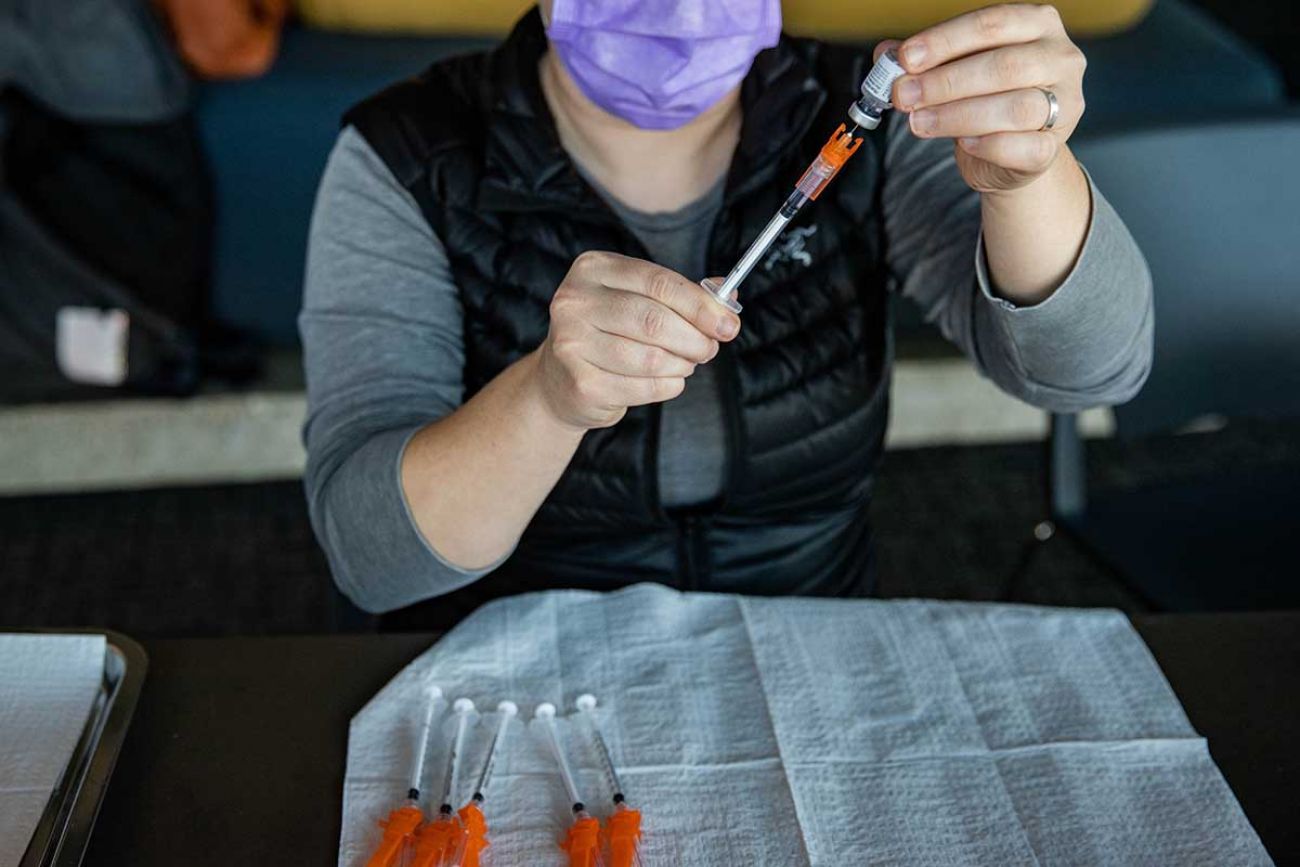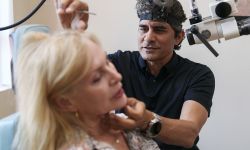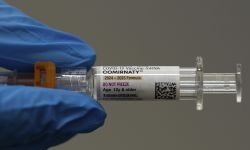Michigan may not hit 70% vaccination rate until August, as demand falls

Aug. 3: Michigan spent $5M on vaccine lottery, still well shy of 70 percent goal
July 28: CDC recommends masks in 11 Michigan counties. Most have low inoculation rates
July 27: CDC recommends indoor mask use. But don’t expect mandates in Michigan
June 30: Delta variant is increasing in Michigan, prompting coronavirus surge fears
In recent days, President Biden and Gov. Gretchen Whitmer have put a bullseye on 70 percent — a goal for adult vaccination rates that would signal a return to normalcy nationwide and end of COVID-19 restrictions in Michigan.
It won’t be easy, as demand for inoculations in Michigan is fading fast, jeopardizing a quick return to office work, concerts, sporting events and a maskless life.
Since Whitmer announced her “Vacc to Normal” plan last week, the state vaccination rate — those getting at least one dose — has moved less than 1 percentage point, from 49.9 percent to 50.6 percent.
If that rate continues, it would be another 10 days before Michigan hits 55 percent — when, according to Whitmer’s plan, workers in settings required to be remote could return to offices two weeks after crossing that threshold.
Related:
- Vaccine mandates increase among Michigan employers. What you need to know.
- Wayne State University issues vaccine mandate; Central Michigan requires masks
- How bad is COVID? Even the deer test positive in Michigan. (Don’t be alarmed)
- Boarding a freighter in the Soo Locks to deliver 5 doses of COVID vaccine
That means it could take seven weeks or more — late into June — to hit the 5.6 million vaccinations necessary to get to 70 percent.
But that’s only if the rate holds firm — which seems unlikely, since demand has dropped precipitously in the past month.
Whitmer’s own experts at the University of Michigan, in an analysis this week, suggest it might take until Aug. 1 to hit 70 percent because of the decline in vaccination rates.
If it takes that long, Whitmer might have to relax restrictions sooner, as she did Tuesday when she altered the state’s mask and gathering guidelines, predicted Michael Van Beek, director of research for the Mackinac Center for Public Policy, a free-market oriented think tank.
“The pressure will build for the governor to lift some of the restrictions, especially if other states do the same and it’s a prolonged time to get to 70 percent,” Van Beek said.
The seven-day total of vaccinations fell 40 percent from April 13 to April 23, dropping from 377,288 to 231,268. More recent data is less reliable of a lag in reporting, but the state has ordered far fewer doses in recent weeks, an indication of decreased demand.
Last week, Michigan ordered 347,370 doses of the Moderna, Pfizer and Johnson & Johnson vaccines, nearly half the 658,700 ordered during the week of April 10, The Detroit News reported this week.
“It’s a real question if we can get to 70 percent,” Van Beek said.
GOP: Wrong metric?
Whitmer and Biden are basing goals on vaccinations — shots in arms — but Republican leaders have balked, saying that’s too narrow a metric for a complicated, evolving pandemic.
Michigan Senate Majority Leader Mike Shirkey, for instance, told a Detroit radio station this week that 70 percent of state residents already may have some form of COVID-19 immunity.
He took flack for the opinion, but a Bridge Michigan analysis suggests many more people — perhaps millions — may have some form of natural immunity.
Michigan needs 5.6 million adults to be vaccinated to hit 70 percent. So far, about 4.1 million residents have received at least one dose.
Shirkey contends Michigan should also count confirmed and likely COVID cases who have some natural immunity to the virus.
Michigan records show 851,000 residents had confirmed cases, while studies estimate that, for every confirmed case, there are three to four others who likely have had COVID-19.
That means there could be 2.7 million to 4 million total survivors in Michigan. If half of them were never vaccinated — a likely assumption given Michigan’s current inoculation rate — that means some 1.35 million to 2 million people may also have natural immunity.
That would put the total of those with at least some immunity at somewhere close to 5.45 million and perhaps more than 6 million.
Shirkey also noted that thousands of Michigan residents traveled to Ohio, Indiana and Wisconsin to get vaccines earlier this spring and were never included in Michigan’s vaccination tally, likely pushing the rate even higher.
After Shirkey’s comments, Whitmer’s administration said her vaccination goal is not tied to herd immunity.
“The 70 percent was an operational goal identified at the beginning of the vaccination campaign, based on the understanding of potential availability of vaccine and ages that would be eligible for vaccination,” said Lynn Sutfin, a spokesperson for the Michigan Department of Health and Human Services.
“This is not a community immunity metric.”
That claim surprised Abby Walls, Shirkey’s spokesperson. She said the Republican and others long thought the goal of vaccinations was to make people immune to the disease.
“Is your goal just to put shots in arms or is it to get people immunity?" Walls said.
Caution required
Dr. Jeff Engel, senior adviser for COVID-19 response for the Council of State and Territorial Epidemiologists, said public policy should consider natural immunity when calculating policies — but with caution.
“We don’t know how to measure natural immunity within the general population,” he said.
Research has shown that natural immunity may last as long as eight months though likely less, while current research shows the vaccines protect for at least six months.
But whether the goal is vaccinations or immunity, health experts are less supportive of picking a specific number as the sole marker of success.
Dr. Arnold Monto, a University of Michigan epidemiologist who has spent a career studying seasonal coronaviruses and other causes of respiratory ailments, said he is frustrated by attempts to hit a specific target.
Vaccines goals are worthwhile, but they aren’t the same as herd immunity and could be misleading, he said.
“When they come up with numbers, it’s from mathematical modeling and all sorts of assumptions which aren't all that well defined,” said Monto, who also chairs the advisory committee advising the U.S. Food and Drug Administration on the safety and efficacy of the COVID vaccines.
After years of research, scientists know that levels of vaccination needed to achieve herd immunity vary by disease — up to 94 percent for measles, but 80 to 86 percent for polio, for example.
But herd immunity is far less clear with COVID-19, public health experts told Bridge Michigan this week.
With near daily reports that getting to so-called herd immunity may be impossible, state and national leaders may have to set different goals, focusing on the proof that vaccinations are greatly reducing serious illness and deaths, especially among inoculated seniors.
“If we’re able to impact hospitalizations and death, that’s good enough for me,” Engel said.
The disease is too widespread globally, with too few vaccinations, to expect near eradication, like was done with polio and measles.
Instead, the vaccines offer hope to limit the damage, he said.
“It’ll be manageable. It’s not going away,” he said.
Derel Glashower, senior epidemiologist for the Ottawa County Department of Public Health in west Michigan, said goals at least focus everyone in the same direction, and the state can still reach the 70 percent mark.
But, he said, “if (70 percent) is the goal, that’s a floor, not a ceiling.”
See what new members are saying about why they donated to Bridge Michigan:
- “In order for this information to be accurate and unbiased it must be underwritten by its readers, not by special interests.” - Larry S.
- “Not many other media sources report on the topics Bridge does.” - Susan B.
- “Your journalism is outstanding and rare these days.” - Mark S.
If you want to ensure the future of nonpartisan, nonprofit Michigan journalism, please become a member today. You, too, will be asked why you donated and maybe we'll feature your quote next time!








